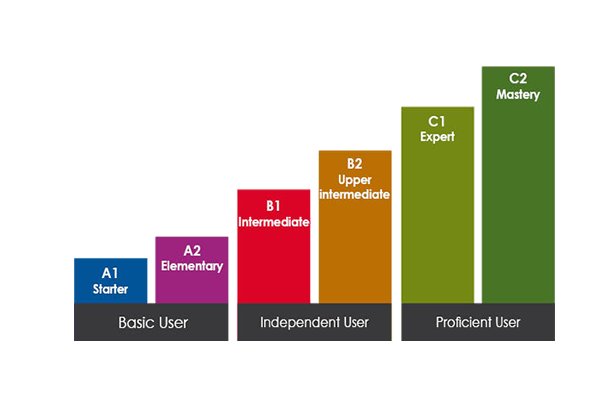Help
This tool allows you to assess your skills on a scale according to the 6 following levels:

A (basic user)
A1 (beginner)
- understand and use very basic phrases aimed at the satisfaction of needs of a concrete type,
- introduce themselves and others and can ask and answer questions about personal details such as where they live, people they know and things they have,
- interact in a simple way if the other person talks slowly and clearly and is prepared to help.
A2 (elementary)
- understand sentences and frequently used expressions related to areas of most immediate relevance (e.g. very basic personal and family information, shopping, local geography, employment),
- communicate in simple and routine tasks requiring a simple and direct exchange of information on familiar and routine matters,
- describe in simple terms aspects of their background, immediate environment and matters in areas of immediate need.
B (independent user)
B1 (intermediate)
- understand the main points of clear standard input on familiar matters regularly encountered in work, school, leisure, etc,
- deal with most situations while travelling in an area where the language is spoken,
- produce simple connected text on topics that are familiar or of personal interest,
- describe experiences and events, dreams, hopes and ambitions and briefly give reasons and explanations for opinions and plans.
B2 (upper intermediate)
- understand the main ideas of complex text on both concrete and abstract topics, including technical discussions in their field of specialization,
- interact with a degree of fluency and spontaneity that makes regular interaction with native speakers quite possible without strain for either party,
- produce clear, detailed text on a wide range of subjects and explain a viewpoint on a topical issue giving the advantages and disadvantages of various options.
C (proficient user)
C1 (effective operational proficiency or advanced)
- understand a wide range of demanding, longer clauses, and recognize implicit meaning,
- express ideas fluently and spontaneously without much obvious searching for expressions,
- use language flexibly and effectively for social, academic and professional purposes,
- produce clear, well-structured, detailed text on complex subjects, showing controlled use of organizational patterns, connectors and cohesive devices.
C2 (mastery or proficiency)
- understand with ease virtually everything heard or read,
- summarize information from different spoken and written sources, reconstructing arguments and accounts in a coherent presentation,
- express themselves spontaneously, very fluently and precisely, differentiating finer shades of meaning even in the most complex situations.
- FAQ Author: vincent
 May 2017
May 2017
Related topics:
- How to teach a language to a class of students
- How to learn Chinese tones?
- What are the most important languages for business?
Comments
 2
All
2
All
 | FadouaMnedApril 2018 Hello I'm a new member in your club and I want to know how I can evaluate my level. Because I found an event in Paris for intermidiate B1 to expert C2. And I would know if I can participate in this Event. Thanks in andvance for your response. |
 English
English
vincentMarch 2021 Hello, you can join us every Tuesday online for a French / English language exchange : https://polyglotclub.com/france/ile-de-france/paris/event/54645

FadouaMnedApril 2018 Thank you for your response Vincent I'll be to the event tomorrow Have a nice day !
Have a nice day !

vincentSeptember 2019 Hello Fadoua, you can try and see if the class suits your level. best regards,
 | mastaneh_tAugust 2020 Hello |
 English
English
vincentMarch 2021 Hello, you can join us every Tuesday online for a French / English language exchange : https://polyglotclub.com/france/ile-de-france/paris/event/54645













































